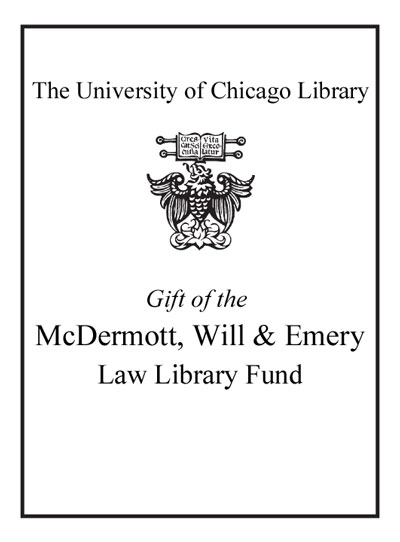Civic integration and modern citizenship : the Netherlands in perspective /
Saved in:
| Author / Creator: | Klaver, Jeanine. |
|---|---|
| Imprint: | Groningen : Europa Law Publishing, 2009. |
| Description: | xiv, 204 p. : ill. ; 24 cm. |
| Language: | English |
| Subject: | |
| Format: | Print Book |
| URL for this record: | http://pi.lib.uchicago.edu/1001/cat/bib/7989666 |
Table of Contents:
- Acknowledgements
- Preface
- Contents
- Chapter 1. Introduction
- 1.1. Civic Integration as a New Political Response
- 1.2. Dutch Civic Integration Experiences in Perspective
- 1.3. Content of this Volume
- Chapter 2. Concepts of Citizenship and Civic Integration
- 2.1. Citizenship: Traditional and Modern Discussions
- 2.1.1. Status and the Position of Non-Citizens
- 2.1.2. Rights and the Position of Non-Citizens
- 2.1.3. Engagement and the Position of Non-Citizens
- 2.1.4. Identity and the Position of Non-Citizens
- 2.2. Traditional Immigration Models Reconsidered
- 2.2.1. National Concepts and Regional Models
- 2.2.2. The Legal Dimension
- 2.2.3. The Economic Dimension
- 2.2.4. The Cultural Dimension
- 2.2.5. The Need for Alternatives
- 2.3. Civic Integration and How it Functions
- 2.3.1. Target Groups
- 2.3.2. Language Programmes
- 2.3.3. Social Orientation
- 2.3.4. Civic Integration and Welfare Arrangements
- 2.3.5. Legal Implications
- 2.4. Preliminary Perspectives on Civic Integration
- 2.4.1. Traditional Citizenship Notions and Civic Integration
- 2.4.2. Citizenship Notions in Modern Societies
- 2.4.3. Civic Integration and Modern Notions of Citizenship
- Chapter 3. Dutch Approaches to Integration and Citizenship from an Historical Perspective
- 3.1. Migration and Integration in the Netherlands
- 3.1.1. The Socio-Economic Integration of Ethnic Minorities
- 3.1.2. The Socio-Economic Position Explained
- 3.1.3. Social and Cultural Integration
- 3.2. Changing Notions on Integration and Citizenship
- 3.2.1. From Immigrants as Care Categories to Active Citizens
- 3.2.2. From Multicultural Citizenship to Shared Citizenship
- 3.2.3. From Formal Citizenship to Citizenship as a Moral Category
- 3.3. Civic Integration as the Panacea?
- Chapter 4. Civic Integration Policies in the Netherlands
- 4.1. Civic Integration Linking Immigration and Integration
- 4.2. Civic Integration Policies for Immigrants in the Netherlands
- 4.2.1. The First Act on Civic Integration for Newcomers (WIN)
- 4.2.2. The New Civic Integration Act (WI)
- 4.2.3. Results and Effects of the Civic Integration Acts
- 4.3. Overseas Civic Integration: The Act on Civic Integration Abroad
- 4.3.1. Policy Aims and Content
- 4.3.2. Results and Effects of the Act on Civic Integration Abroad
- 4.4. Civic Integration in Dutch Naturalisation Policies
- 4.4.1. Civic Integration Requirements in Nationality Law
- 4.4.2. Results and Effects of Civic Integration Requirements in Nationality Law
- 4.5. Civic Integration in the Netherlands and Dimensions of Citizenship
- 4.5.1. Civic Integration and Citizenship as Status
- 4.5.2. Civic Integration and Citizenship as Rights
- 4.5.3. Civic Integration and Citizenship as Engagement
- 4.5.4. Civic Integration and Citizenship as Identity
- 4.6. Concluding Remarks
- Chapter 5. The Flemish Model of Civic Integration
- 5.1. Citizenship and Integration in a Belgian Context
- 5.1.1. Integration Guideline
- 5.1.2. Belgian Multiculturalism
- 5.1.3. A Shifting Paradigm
- 5.1.4. Division of Political Responsibilities
- 5.2. Integration Policies in Flanders: a Short History
- 5.2.1. The Evolution of Flemish Integration Policy
- 5.2.2. The Establishment of Civic Integration in Flanders
- 5.3. Civic Integration in Flanders
- 5.3.1. The Content of Flemish Language and Orientation Courses
- 5.3.2. The Organisation of Flemish Language and Orientation Courses
- 5.3.3. The Target Groups Identified
- 5.3.4. Sanctioning
- 5.3.5. The Effects Produced by Civic Integration
- 5.4. Civic Integration in Wallonia and Brussels
- 5.4.1. The Walloon Region
- 5.4.2. The Region of Brussels
- 5.5. Major Integration Challenges in Belgium
- 5.5.1. The Migration Situation
- 5.5.2. Socio-Economic Integration
- 5.5.3. Socio-Cultural Integration
- 5.5.4. Decision-Making Structure
- 5.6. Civic Integration and Citizenship in Flanders
- 5.6.1. Status
- 5.6.2. Rights
- 5.6.3. Engagement
- 5.6.4. Identity
- 5.7. Concluding Remarks
- Chapter 6. The Canadian Model of Integration and Citizenship
- 6.1. Unity in Diversity: Canadian Multiculturalism
- 6.1.1. From Anglo-Conformity towards the Contours of a Canadian Identity
- 6.1.2. Multiculturalisrn as a Model for National Unity and Identity
- 6.2. Immigration Policies
- 6.2.1. A Brief Historical Overview of Canadian Immigration Policies
- 6.2.2. Current Immigration Policies
- 6.3. Integration Policies
- 6.3.1. Federal Settlement Programmes
- 6.3.2. The Employment Equity Act
- 6.4. Naturalisation Policies
- 6.5. Contemporary Integration Challenges
- 6.5.1. Underutilization of Immigrant Labour and Racialization of Poverty
- 6.5.2. Social Cohesion and Multiculturalism
- 6.6. Migrants and Citizenship
- 6.6.1. Status
- 6.6.2. Rights
- 6.6.3. Engagement
- 6.6.4. Identity
- 6.7. Concluding Remarks
- Chapter 7. Integration and Citizenship in the United States
- 7.1. The United States as an Immigrant Society
- 7.1.1. Balancing between Assimilation and Multiculturalism
- 7.1.2. Civil Society over Government Intervention
- 7.1.3. Accessible and Thin Citizenship
- 7.2. US Policy Measures
- 7.2.1. Immigration Policy Measures
- 7.2.2. Integration Policy Measures
- 7.2.3. Granting Rights to Migrants
- 7.2.4. Access to Social Security
- 7.2.5. Linguistic Assimilation and Language Training
- 7.2.6. Special Status of Refugee Policy
- 7.3. The Naturalisation Process
- 7.4. Integration via the Labour Market and the Civil Society
- 7.4.1. Integration via the Workforce
- 7.4.2. Integration and the Local Civil Society
- 7.4.3. Current Integration and Immigration Challenges
- 7.5. Migrants and Citizenship
- 7.5.1. Status
- 7.5.2. Rights
- 7.5.3. Engagement
- 7.5.4. Identity
- 7.6. Concluding Remarks
- Chapter 8. Concluding Remarks
- 8.1. Civic Integration Considered from an Historical Perspective
- 8.2. Civic Integration Considered from a Theoretical Perspective
- 8.3. Civic Integration in an International Perspective
- 8.4. Civic Integration Reconsidered: Final Remarks
- 8.4.1. Civic Integration and its Effect
- 8.4.2. Civic Integration and the Legitimacy Discussion
- 8.4.3. Final Synthesis
- Bibliography

